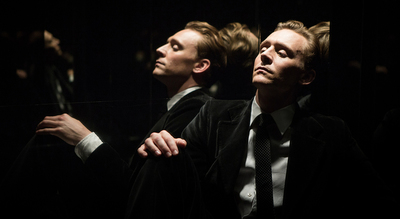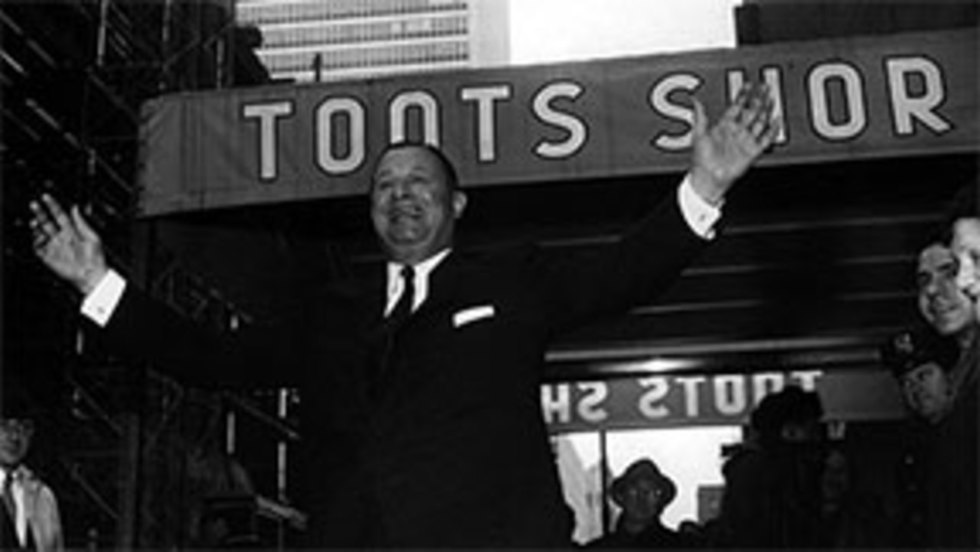
BY THE EDITORS |
An Interview with Kristi Jacobson, director of Toots

From 1940 to 1959 midtown Manhattan saloon Toots Shor’s was the place to be seen, entertaining notables such as Frank Sinatra, Joe Dimaggio, and Jackie Gleason on a nightly basis. And its eponymous bartender was the man to see. Decades later, filmmaker Kristi Jacobson examined her legendary grandfather's world through interviews with family, friends, and famous patrons, as well as an astonishing amount of archival footage. The result is Toots, which had its world premiere at the 2006 Tribeca Film Festival. Jacobson is an award-winning independent documentarian whose work tackles a wide range of subjects, including violence against women, workers’ rights, HIV and AIDS, capital punishment, and homelessness. Her films have been featured on HBO, A&E, Lifetime, ABC Television, Sundance Channel, and PBS. Toots opens in theaters in New York on September 14, and in other cities around the country throughout September and October.
Tribeca : What’s been happening for you and this film since the 2006 Tribeca Film Festival?
Kristi Jacobson : The experience of premiering Toots at Tribeca was tremendous, for so many reasons. Almost everybody [who was interviewed] in the film was there, so we all experienced it together. Frank Gifford was there. Walter Cronkite was there. LeRoy Nieman was there. I will never forget that night. Starting here in New York, where it belonged, couldn’t have given me more confidence to share it with the world.
Since then, it’s been a more exciting year than I had anticipated, both because I’ve traveled to a number of film festivals and because I’ve had a great time sharing the film with audiences. Thanks to the attention the film got both in the media and through word of mouth during Tribeca, my distributor found me, so we’ve been working on and preparing for the theatrical release.
How has Toots been received when you’ve shown it in other places?
Audiences have been really moved by it. I’m not surprised when older audiences respond to it, because there’s almost always someone in the audience who tears up and remembers some experience of having been there. But with the younger audiences—their responses to it have been really special. You know, everyone’s fascinated by New York, and this film shines a light on a time that many people just never understood until now. People have found themselves connecting to their parents or grandparents in a way that they didn’t expect. And I feel proud of the fact that, at the end of the film, people feel like they really know Toots.
Most of your films have been about very serious social issues. How did this filmmaking experience differ for you?
I make films because I want people to be moved to change things and make the world a better place. What I didn’t realize was that that moment of audiences understanding New York, or laughing, just having fun, is just as important! I get to laugh during the Q&As! People want to hear more stories.
Toots is about much more than just the man—it’s also about nostalgia. When the boxing writer, Burt Sugar, says in the film, “It was a simpler time, not a more innocent time,” the film takes on new resonance. Was that intentional?
Well, he hits the nail on the head there. One of the things that I found fascinating about that era and the group that Toots was drawn to is that almost all of them came from nothing. That was their common bond. They had to do a lot to survive and get where they were. Sure, there are people in the papers today who have that same story, but there are also a lot of people who haven’t traveled quite as far, certainly in terms of the celebrity culture that is so out of control now.
The celebrity-for-celebrity’s-sake phenomenon wasn’t as much of a reality back then?
Well, there were the society types, but they weren’t at Toots Shor’s. They didn’t want to go to his place, and he was happy that they weren’t coming!
The amount of footage and the number of interviews in Toots is extraordinary. With so much material, was the editing process more revealing than you expected?
The most important thing that we found in the editing process was that this film was not only about Toots Shor. It was about New York as much as it was about him.
Did that set you free to expand the story even further?
Absolutely. It became a film about New York and this incredibly rich era, as much as it was about this man who embodied it. And that was a surprise. My mother didn’t really talk about him much when I was growing up, and the more I learned about him, the more I thought, “How could she not have told me that?” But without a real understanding of the context in which he lived, it would be impossible to explain who he was.
Is there a place like Toots Shor’s in New York today?
A person like Toots and place like Toots Shor's can’t really exist in cities like New York today. People tell me the closest thing to Toots Shor’s is Elaine’s on the Upper East Side, where a lot of writers go, and she’s a very unique character. But I think the inequity, in terms of where people go, is really prevalent now. People knew they were going to Toots’. They knew their friends were going to be there. They’d drink a lot and tell a lot of stories!
How long did you work on the film?
By the time it’s released, it will be 10 years! I shot the first two interviews on the same day—Frank Gifford and Walter Cronkite—in 1998, and I started the research in 1997. It was my side project for many years, but once I really committed to it in 2004, I had shot a lot of interviews and acquired an amazing amount of materials. I had what most people would have if they were making a film quickly. Then I had two more years of searching and digging deeper and deeper into the archival troves that were out there.
You were quite young when he died. Did you get a chance to create a relationship with him as you made the film?
When I was making the film, I bounced between my role as filmmaker, and my role as his granddaughter and then my role as his daughter's—my mother’s—daughter. The more I learned about his life, the more I learned what a tremendous legacy he has, and the weight and pressure of that grew and grew! But there were moments where I connected with him in ways I couldn’t have dreamed possible. The connections that his friends had with me helped me connect with him. I know that a big part of why they welcomed me in is because they see Toots in me in many ways.
What are you working on now?
I’m working on a series of one-hour documentaries in the vein of Toots—about unique individuals who reveal something about an era and a city. I was bitten by the bug of historical filmmaking with a contemporary vision. Our connection with the past is incredibly important. Looking back can give us a lot of perspective on who we are.

